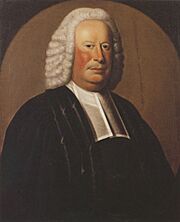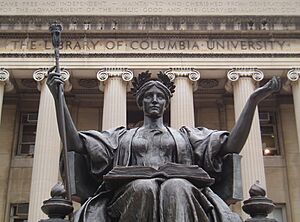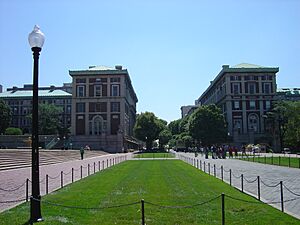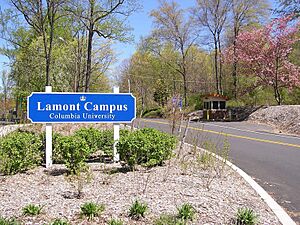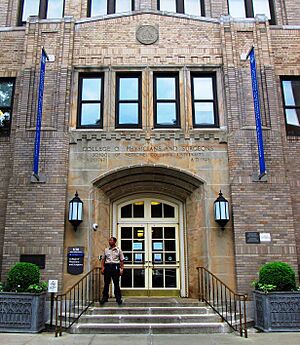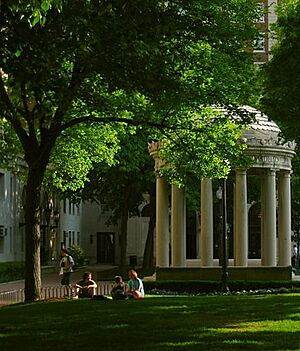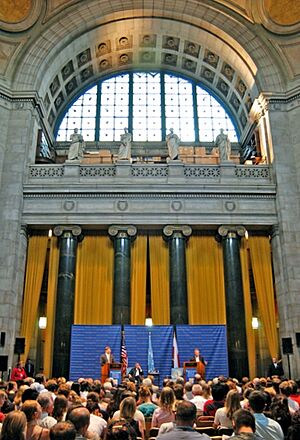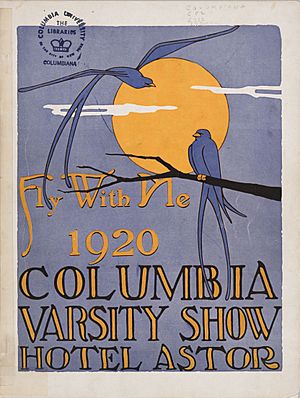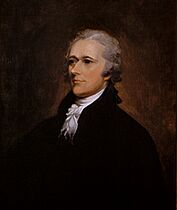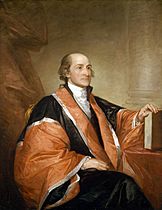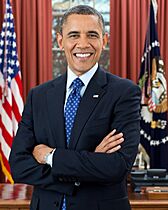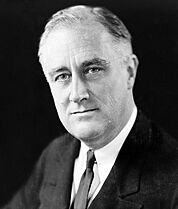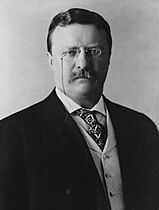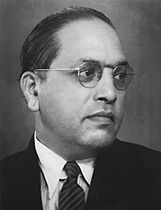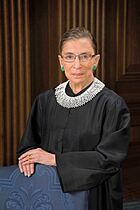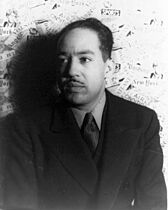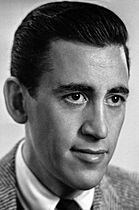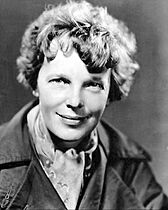Columbia University facts for kids
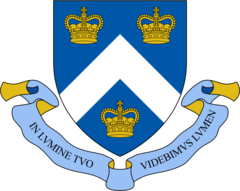
Coat of arms
|
|
| Latin: Universitas Columbiae | |
|
Former names
|
King's College (1754–1784) Columbia College (1784–1896) |
|---|---|
| Motto | In lumine Tuo videbimus lumen (Latin) |
|
Motto in English
|
"In Thy light shall we see light" |
| Type | Private, research university |
| Established | May 25, 1754 |
| Accreditation | MSCHE |
|
Academic affiliations
|
|
| Endowment | $14.8 billion (2024) |
| Budget | $6.6 billion (2024) |
| President | Claire Shipman (acting) |
| Provost | Angela Olinto |
|
Academic staff
|
4,628 |
| Students | 36,649 |
| Undergraduates | 9,761 |
| Postgraduates | 26,888 |
| Location |
,
,
United States
40°48′27″N 73°57′43″W / 40.80750°N 73.96194°W |
| Campus | Large city, 299 acres (1.21 km2) |
| Newspaper | Columbia Daily Spectator |
| Colors | Columbia Blue and White |
| Nickname | Lions |
|
Sporting affiliations
|
|
| Mascot | Roar-ee the Lion |
Columbia University is a private Ivy League research university in New York City. It is one of the oldest and most famous universities in the United States. It was founded in 1754 as King's College with permission from King George II of Great Britain. Its first campus was on the grounds of Trinity Church in Manhattan.
After the American Revolution, the school changed its name to Columbia College in 1784. Two of its famous former students, Alexander Hamilton and John Jay, helped create a private board to run the school. In 1896, the campus moved to its current home in the Morningside Heights neighborhood and was renamed Columbia University. It is the oldest college in New York and the fifth-oldest in the United States.
Columbia is known for its important research. Scientists at Columbia have been part of major discoveries, like the laser, the first nuclear fission reaction in the Americas, and early research for the Manhattan Project during World War II. The university also gives out the famous Pulitzer Prize every year.
Many important people have studied or taught at Columbia. These include seven of the Founding Fathers of the United States, four U.S. presidents, 10 Supreme Court justices, and over 100 Nobel Prize winners.
Contents
History of Columbia University
King's College in the 1700s
The idea for a college in New York started as early as 1704. The school, called King's College, officially opened in 1754. Its first president was Samuel Johnson. The college was created by a royal charter, which was a special permission slip from King George II.
When the American Revolutionary War began in 1776, the college had to close for eight years. Its building was used as a military hospital by both American and British soldiers. After the war, the school reopened in 1784 with a new name: Columbia College. The name came from Columbia, a poetic name for America.
Famous leaders like George Washington and John Adams attended the college's graduation ceremony in 1789 to honor the many students who had helped in the American Revolution.
Growing in the 1800s
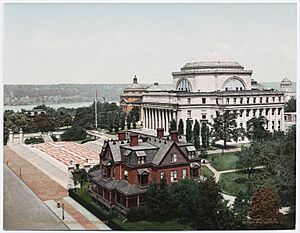
In 1857, the college moved to a new campus on 49th Street and Madison Avenue. During this time, it grew into a modern university. In 1889, Barnard College was created as a college for women because Columbia did not accept female students at the time.
In 1896, the university moved again to its current location in Morningside Heights. The new campus was much larger. The president at the time, Seth Low, wanted to create a university where many different subjects could be studied in one place.
Big Changes in the 20th Century
Under President Nicholas Murray Butler, who led the university for over 40 years, Columbia became a top research center. During the 1940s, Columbia professors were key figures in the Manhattan Project, the secret U.S. project to build the first atomic bomb during World War II.
In the 1960s, the university saw large student protests. Students were unhappy about several issues, and they occupied buildings on campus. These events led to big changes at the university.
For many years, only men could attend Columbia College. After trying for years to join with Barnard College, Columbia College finally began accepting women in 1983. Today, Barnard College is still a women's college but works closely with Columbia.
Columbia in the 21st Century
In recent years, Columbia has continued to grow. It expanded its campus into a nearby neighborhood called Manhattanville. This created more space for research and for schools like the Business School.
From 2023 to 2025, the university experienced a period of intense student protests related to the war in Gaza. The disagreements on campus led to major changes, including the resignation of President Minouche Shafik. The university also made an agreement with the U.S. government to change some of its rules and policies.
The University Campus
Morningside Heights Campus
Columbia's main campus is in the Morningside Heights neighborhood of Upper Manhattan. It covers more than six city blocks. The campus was designed to look grand and impressive, with many buildings made of stone.
The Low Memorial Library is the most famous building on campus. In front of it sits the Alma Mater statue. A fun legend says that the first first-year student to find a tiny hidden owl in the statue will become the class valedictorian. In front of the library are "The Steps," a popular spot for students to hang out, relax, and socialize.
Butler Library is the main library at Columbia and holds millions of books. The university's library system is one of the largest in the country.
Other Campuses
Columbia has several other campuses. The Columbia University Medical Center is located in the Washington Heights neighborhood. This is where the health and medical schools are.
The university also has a campus in Manhattanville, a neighborhood just north of the main campus. This new area has modern buildings for the Business School and scientific research centers.
Other campuses include the Lamont–Doherty Earth Observatory for studying the Earth and the Baker Field athletics complex for sports.
What It's Like to Be a Student
Getting into Columbia
Columbia is one of the most difficult universities to get into in the world. For the class entering in 2021, only about 4 out of every 100 students who applied were accepted. Students come from all over the world and from many different backgrounds. The university offers financial aid to help students pay for their education.
Student Life
Most undergraduate students live on campus in dormitories. First-year students usually live in one of the large dorms near the center of campus. Older students can choose to live in apartment-style housing with their friends.
Columbia has many student clubs and groups. There are fraternities and sororities, which are social organizations for students. There are also many publications, like the Columbia Daily Spectator, which is the second-oldest student newspaper in the country. Other groups focus on debate, Model United Nations, and technology.
World Leaders Forum
Columbia hosts the World Leaders Forum, an event where leaders from around the world come to speak. Students and teachers get to hear from presidents, prime ministers, and other important figures. Past speakers have included former U.S. President Bill Clinton, the 14th Dalai Lama, and former UN Secretary-General Kofi Annan.
University Traditions
The Varsity Show
The Varsity Show is a musical comedy show written and performed by students every year. It started in 1893 to raise money for sports teams. The show makes fun of life at Columbia and is a very popular tradition. Famous people like the composers Richard Rodgers and Oscar Hammerstein II were part of the Varsity Show when they were students.
Tree Lighting and Yule Log
Every December, the university holds a Tree Lighting ceremony. The trees along College Walk are decorated with lights, and students gather for hot chocolate and music.
After the Tree Lighting, the Yule Log ceremony takes place. This tradition is even older and dates back to before the American Revolution. Students dressed as soldiers from the Continental Army carry a large log to a fireplace in John Jay Hall, where it is lit.
Sports at Columbia
Columbia's sports teams are called the Lions. They compete in the Ivy League against other top universities like Harvard, Yale, and Princeton. The university has 29 varsity teams, including football, basketball, and rowing.
Famous athletes who went to Columbia include baseball Hall of Famers Lou Gehrig and Eddie Collins. In 1939, the first-ever televised sports event was a baseball game between Columbia and Princeton.
Famous People from Columbia
Columbia has been home to many famous and successful people.
- Founding Fathers: Alexander Hamilton, who was the first U.S. Secretary of the Treasury, and John Jay, the first Chief Justice of the United States, both attended King's College.
- U.S. Presidents: Theodore Roosevelt, Franklin D. Roosevelt, and Barack Obama all studied at Columbia.
- World Leaders: The university has educated dozens of presidents and prime ministers from other countries.
- Business Leaders: Famous investor Warren Buffett and S. Robson Walton, the chairman of Walmart, are graduates.
- Writers and Artists: Writers like J.D. Salinger (The Catcher in the Rye) and Langston Hughes, a key figure of the Harlem Renaissance, attended Columbia.
- Scientists: Many important scientists have worked or studied at Columbia, helping to invent things like FM radio and making discoveries in physics and medicine.
- Notable Columbia University alumni include:
-
John Jay: Founding Father and first Chief Justice of the United States
-
Franklin D. Roosevelt: 32nd President of the United States
-
Theodore Roosevelt: 26th President of the United States
-
B. R. Ambedkar: A Founding Father of India
-
Warren Buffett: Famous investor and business leader
-
Langston Hughes: Poet of the Harlem Renaissance
-
Zora Neale Hurston: Author and filmmaker of the Harlem Renaissance
-
J. D. Salinger: Author of The Catcher in the Rye
-
Amelia Earhart: Famous aviator who was the first woman to fly solo across the Atlantic Ocean
See also
 In Spanish: Universidad de Columbia para niños
In Spanish: Universidad de Columbia para niños
- Columbia Encyclopedia
- Columbia Glacier, a glacier in Alaska, U.S., named for Columbia University
- Columbia MM, a text-based mail client developed at Columbia University
- Columbia Non-neutral Torus, a small stellarator at the Columbia University Plasma Physics Laboratory
- Columbia-Princeton Electronic Music Center, an album of electronic music released in 1961
- Columbia Revolt, a black-and-white 1968 documentary film
- Columbia Scholastic Press Association
- Columbia School of Linguistics
- Columbia Spelling Board, a historic etymological organization
- Columbia Unbecoming controversy
- Columbia University in popular culture
- Columbia University Partnership for International Development
- Mount Columbia, a mountain in Colorado, U.S., named for Columbia University
- Nutellagate, a controversy surrounding high Nutella consumption at Columbia University
- The Strawberry Statement, a non-fiction account of the 1968 protests
- 2024 Columbia University pro-Palestinian campus occupations


